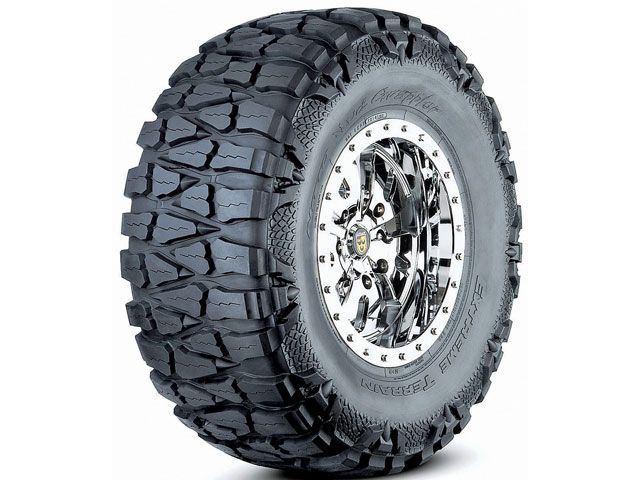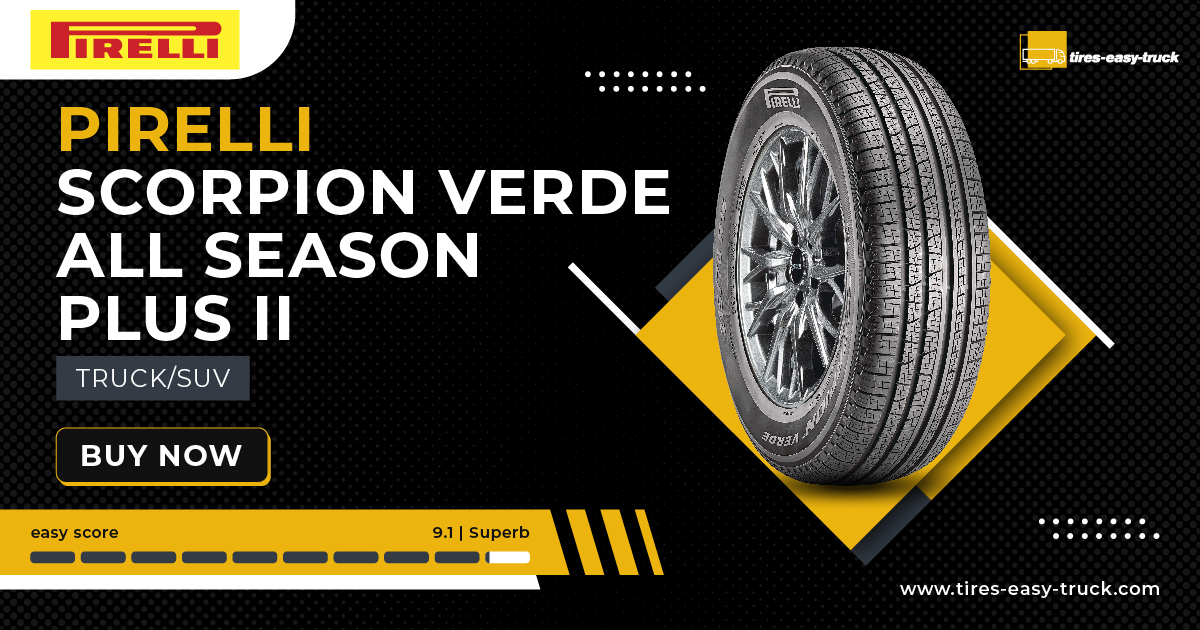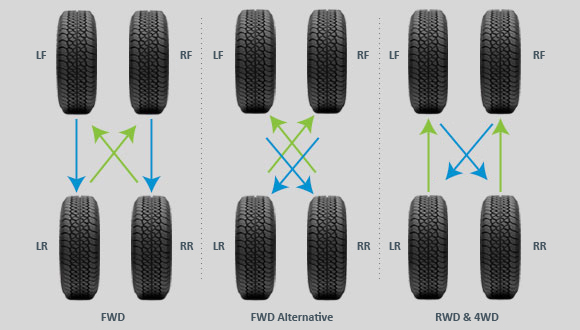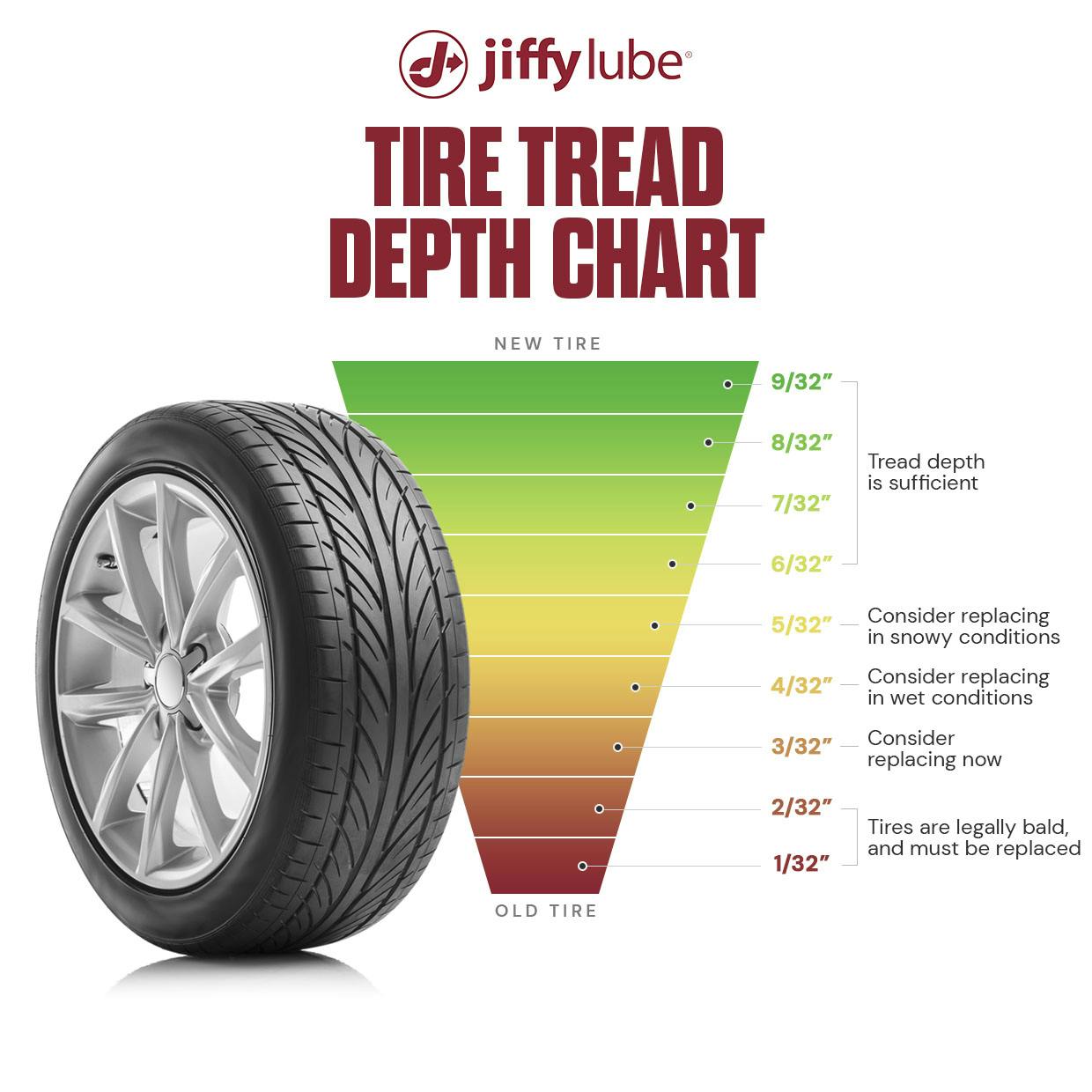
Table Of Contents
Introduction
Importance of Choosing the Right Truck Tires
Choosing the right truck tires is crucial for ensuring both safety and efficiency on the road. Think of tires as the shoes for your vehicle; just like the wrong pair can lead to discomfort and poor performance, the wrong tires can compromise your truck’s handling, fuel efficiency, and overall performance. A personal experience underscores this point. A friend once ignored tire specifications and ended up with a set that was too narrow. The result? A bumpy ride and increased tire wear that led to costly replacements sooner than expected.
Factors to Consider When Buying Truck Tires
When it’s time to make a tire purchase, several factors should guide your decision:
- Truck Type: Different trucks require different tire specifications. Is it a pickup, a delivery truck, or a heavy-duty vehicle?
- Terrain: Consider where you’ll be driving most. Off-road tires differ significantly from those designed for highways.
- Weather Conditions: Mild all-season tires might suffice in temperate climates, but regions with heavy snowfall may require specialized winter tires.
- Load Capacity: Verify the load index to ensure your tires can handle the weight of your truck and any cargo.
By assessing these factors carefully, you’re setting yourself up for a safer and more enjoyable driving experience. Making informed choices leads to longevity and performance from your truck tires.

Understanding Truck Tire Size
Truck Tire Size Guide
Understanding tire size can seem daunting at first, but it’s simpler than it appears. Truck tires are marked using a sequence of numbers and letters that indicates specific dimensions and capabilities. For example, a tire labeled P265/70R17 breaks down as follows:
- P: Indicates the tire type (P for passenger, LT for light truck).
- 265: The tire width in millimeters.
- 70: The aspect ratio, which is the height of the sidewall as a percentage of the width.
- R: Denotes radial construction, the most common type of tire.
- 17: The diameter of the wheel in inches.
Being able to decode these specifications can help you select the right tires for your truck’s needs.
Impact of Tire Size on Performance
The size of your truck tires significantly impacts performance. Choosing the wrong size can affect everything from fuel efficiency to handling. For example, larger tires may provide better traction and off-road performance but can decrease fuel efficiency due to increased rolling resistance. Consider this: A friend upgraded their truck with oversized tires for better ground clearance. While they loved the off-road capability, they quickly noticed a drop in fuel economy and had to adjust their driving habits accordingly. In summary, while bigger isn’t always better, the right size can enhance your vehicle’s capabilities and longevity. Therefore, always check compatibility with your truck’s specifications and consider your driving habits before making a choice.

Types of Truck Tires
All-Terrain Tires
When it comes to versatility, all-terrain tires are a favorite among truck owners. They are designed to perform well both on and off the road, making them an ideal choice for those who frequently switch between different driving conditions. Imagine a friend who uses their truck not just for daily commuting but also for weekend adventures at the local off-road park. They opted for all-terrain tires and found they provided a great balance between on-road comfort and off-road ruggedness. Key Features of All-Terrain Tires:
- Tread Design: These tires offer a dual-purpose tread pattern, featuring large voids for off-road traction and tighter treads for highway stability.
- Durability: Made from robust materials, they can withstand wear and tear from various terrains.
- Comfort: Designed to reduce road noise, making highway driving more enjoyable.
Mud-Terrain Tires
For serious off-road enthusiasts, mud-terrain tires are the go-to option. These tires are built to tackle the toughest conditions, particularly muddy and off-road environments. A colleague who frequently participates in off-roading competitions swears by his mud-terrain tires. He found that while they offer incredible grip on slippery surfaces, they do come with some trade-offs, especially regarding road noise and wear on pavement. Benefits of Mud-Terrain Tires:
- Aggressive Tread Patterns: Deep treads allow for maximum traction in soft, muddy, or loose terrain.
- Sturdier Construction: Designed to resist punctures and abrasions found in rugged landscapes.
- Enhanced Floatation: Helps prevent the tires from sinking into mud, maintaining forward momentum.
Selecting the right type of tire based on your needs will not only enhance performance but also ensure a safer driving experience no matter where your adventures take you.

Truck Tire Tread Patterns
Symmetric Tread Patterns
When it comes to truck tire tread patterns, symmetric designs have a unique appeal. These patterns feature the same tread design on both sides of the tire, making them versatile and easy to install in any rotation direction. Consider a friend who drives a work truck for deliveries. He chose symmetric tread tires and appreciated their consistent performance across various conditions. These tires provide stable handling and a quieter ride, making them ideal for long drives on the highway. Advantages of Symmetric Tread Patterns:
- Even Wear: Because the tread is the same on both sides, wear is consistent, extending the tire’s lifespan.
- Smooth Ride: The design promotes balanced handling, ideal for those who prioritize comfort during longer journeys.
- Easy Rotation: They can be rotated in any direction, reducing the hassle of maintenance.
Directional Tread Patterns
On the other hand, directional tread patterns are engineered for specific performance needs. These tires feature a unique V-shaped design that channels water away from the tire, enhancing traction in wet conditions. A relative who enjoys off-roading swears by his directional tread tires. He found that their ability to grip the road when it rains is unbeatable, providing extra confidence on slick surfaces. However, these tires are designed to rotate only in one direction, so proper installation is critical. Benefits of Directional Tread Patterns:
- Enhanced Wet Traction: The design effectively disperses water, minimizing hydroplaning risks.
- Improved Handling: Ideal for trucks frequently driven in adverse conditions, providing a reactive feel on turns and fast maneuvers.
- Performance Focused: Perfect for off-road enthusiasts looking for a competitive edge.
Ultimately, the choice of tread pattern should align with driving habits and conditions, ensuring safety and performance in every mile traveled.

Load Index and Speed Rating
Understanding Load Index
When choosing truck tires, understanding the load index is essential. This number, typically found on the tire sidewall, indicates the maximum weight each tire can safely carry. For instance, a load index of 104 translates to a maximum load capacity of approximately 1,984 pounds. A friend who frequently hauls heavy equipment learned this the hard way. After purchasing tires without checking their load indexes, he found himself overloading them, leading to premature wear and a couple of flat tires on the job site. Key Points about Load Index:
- Vehicle Specification: Always refer to the manufacturer’s recommendations for load index to ensure you’re meeting safety standards.
- Safety Margin: It’s wise to choose tires with a load index that exceeds the maximum load you expect to carry, providing a buffer for safety.
Importance of Speed Rating
Just as crucial as the load index is the tire’s speed rating, which indicates the maximum speed the tire can safely handle. Common ratings include letters like P (for passenger) or T (up to 118 mph). A relative once bought a set of tires rated for city driving, unaware that his long highway commutes required a higher speed rating. He learned that lower-rated tires can degrade at higher speeds, leading to reduced handling and safety. Key Considerations for Speed Ratings:
- Driving Habits: Evaluate how you use your truck. If you often travel at high speeds, opt for tires with higher ratings.
- Compatibility: Ensure that the speed rating aligns with your vehicle’s performance characteristics and driving needs.
In conclusion, being mindful of both load index and speed rating plays a vital role in ensuring safety and durability, paving the way for a more secure and efficient driving experience.

Truck Tire Brands
Top Truck Tire Brands
When it comes to truck tires, brand reputation can significantly influence performance and reliability. Some of the top brands that consistently receive high marks from drivers include:
- Michelin: Known for durability and excellent handling, Michelin tires are often the go-to for those seeking high performance.
- Goodyear: This brand offers a range of options tailored for various terrains, making them versatile for both on and off-road conditions.
- Bridgestone: With impressive innovations in tire technology, Bridgestone tires often excel in fuel efficiency and wear resistance.
A neighbor who owns a construction business swears by his Goodyear tires. He’s found that they not only provide outstanding traction but also last through tough work conditions, saving him money in the long run.
Budget-Friendly Tire Options
Not everyone has the budget for premium tires, but several affordable options still deliver on performance. Brands like Hankook, Cooper, and General Tire offer solid products without breaking the bank. For instance, a colleague recently opted for Cooper tires for his older truck, and he has been pleasantly surprised by their longevity and grip on wet roads. Tips for Choosing Budget-Friendly Tires:
- Read Reviews: Look for feedback from other users regarding performance and durability.
- Comparison Shop: Utilize online resources to find competitive pricing and sales.
- Warranty Offerings: Consider tires with extended warranties, providing peace of mind for your investment.
By balancing quality and cost, you can find the right tires that meet your driving needs without straining your wallet, ensuring you can safely navigate whatever road lies ahead.

Tire Maintenance Tips
Proper Inflation and Rotation
Taking care of your truck tires involves several key maintenance practices, starting with proper inflation and rotation. Maintaining the right air pressure not only ensures safety but also improves fuel efficiency. A friend of mine once overlooked this aspect and found that his under-inflated tires caused excessive wear, leading to a costly replacement. Tips for Proper Inflation:
- Check Regularly: Use a tire gauge at least once a month and before long trips.
- Follow Recommendations: Refer to the vehicle’s manual for the ideal PSI (pounds per square inch).
Equally important is tire rotation, which helps to ensure even wear across all tires. Generally, tires should be rotated every 5,000 to 7,500 miles, but consulting your manual for specific recommendations is worthwhile.
Tire Inspection and Replacement
Regular tire inspections can reveal hidden issues before they become serious. Look for:
- Tread Depth: Use the penny test—insert a penny into the tread; if you can see Abe Lincoln’s head, it’s time to replace the tire.
- Uneven Wear Patterns: These could indicate alignment or suspension issues.
A colleague once ignored uneven wear and faced a blowout during a long road trip, which could have been easily avoided with timely inspections. Ultimately, knowing when to replace your tires is crucial for safety. If you notice significant wear, age (typically every six years), or damage, it’s time to invest in new ones. By prioritizing these maintenance practices, you can extend the life of your tires and enhance your vehicle’s performance on the road.

Off-Road vs. Highway Use
Best Tires for Off-Roading
Choosing the right tires is essential, especially when you plan to tackle rugged terrains. For off-roading, tires designed for tough conditions can make a world of difference. Options like mud-terrain and all-terrain tires are popular among adventurers who love exploring trails, rocks, and even deeper mud. A friend who enjoys weekend off-roading recently switched to mud-terrain tires and was amazed by the grip and traction on steep, slippery inclines. Top Features of Off-Road Tires:
- Aggressive Tread Patterns: These help navigate through mud, gravel, and rocky pathways.
- Durable Construction: Reinforced sidewalls protect against punctures and abrasions.
- Large Void Spaces: Allow for better self-cleaning on muddy trails, improving traction.
Suitable Tires for Highway Driving
For those primarily driving on highways, performance and comfort take precedence. Highway tires typically feature smoother tread patterns for reduced road noise and improved fuel efficiency. When my colleague switched to highway tires for his long daily commutes, he noticed a significant drop in road noise, contributing to a more pleasant driving experience. Characteristics of Highway Tires:
- Long-Lasting Tread Life: Designed for durability on smooth surfaces.
- Good Handling and Stability: Enhances safety during high-speed driving and sharp turns.
- Fuel Efficiency Features: Helps improve gas mileage by minimizing rolling resistance.
In conclusion, understanding the primary use of your vehicle will steer you toward the right tire choice. Whether you’re conquering tough off-road terrain or cruising smoothly on highways, the right tires can enhance performance, safety, and enjoyment on every journey.

Tire Warranty Information
Warranty Coverage Details
Understanding tire warranty information is crucial when purchasing new tires, as it can save you money in case of unexpected issues. Most tire manufacturers offer warranties that typically cover defects in materials or workmanship for a specified time or mileage. For example, a standard warranty might cover a tire for up to six years or 60,000 miles, depending on the brand and model. A friend of mine experienced firsthand the value of a good warranty. After discovering a manufacturing defect in his tire just months after purchase, he was able to get a replacement at no cost due to the warranty coverage. Key Aspects of Warranty Coverage:
- Defect vs. Wear and Tear: Understand what is covered. Warranties usually don’t cover normal wear and tear or damage from improper maintenance.
- Road Hazard Coverage: Look for additional options that cover damage from road hazards like potholes and nails.
Understanding Tire Warranty Terms
While it’s great to have warranty coverage, it’s equally important to fully understand the terms involved. Reading the warranty documents can reveal important details about what is or isn’t covered.
- Pro-Rata Basis: Many warranties are based on a pro-rata system, meaning you might only receive partial credit for a tire after a certain mileage.
- Documentation Required: Keep all receipts and documentation, as proof of purchase and maintenance may be necessary to make a claim.
When purchasing tires, it’s wise to compare warranty options among different brands and models. By being informed about warranty coverage and terms, you can enjoy peace of mind, knowing your investment is protected while driving on your chosen tires. This level of understanding can help you make a more confident choice and ultimately save costs in the long run.

Cost Considerations
Budget-Friendly Tire Options
When it comes to tire shopping, budget constraints are a common concern. Fortunately, there are plenty of budget-friendly tire options that don’t skimp on performance. Brands like Hankook, Cooper, and General Tire offer reliable products that cater to drivers looking to save while still ensuring safety. A neighbor of mine opted for Hankook tires for his daily driver. He was pleasantly surprised to find that, despite their lower price, they delivered solid performance during his daily commutes and weekend getaways. Tips for Finding Budget-Friendly Tires:
- Shop Sales and Discounts: Look out for seasonal sales at local tire stores or online retailers.
- Read Reviews: User experiences can help identify which budget brands hold up over time.
- Consider Used Tires: Though they come with risks, well-maintained used tires can offer significant savings.
Lifetime Value of Premium Tires
On the other end of the spectrum, investing in premium tires can prove to be cost-effective in the long run. Brands like Michelin and Bridgestone may come with a higher upfront cost, but their durability and performance can lead to fewer replacements and better fuel efficiency. A colleague switched to premium tires for his truck and found that not only did they handle better in challenging conditions, but they also lasted significantly longer, reducing his overall tire expenditure. Benefits of Premium Tires:
- Longevity: Typically, premium tires last longer than budget options, which can offset their higher initial cost.
- Enhanced Performance: Better handling, traction, and comfort can elevate your driving experience.
- Warranty and Support: Often come with more comprehensive warranties, ensuring peace of mind in your investment.
Ultimately, weighing the pros and cons of budget-friendly tires versus premium options will help you make an informed decision. Whether you prioritize initial costs or long-term value, understanding your driving needs will lead you to the right tire choice.




